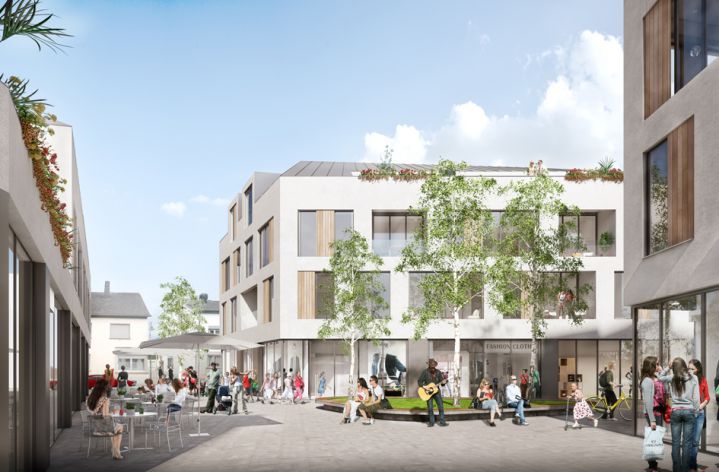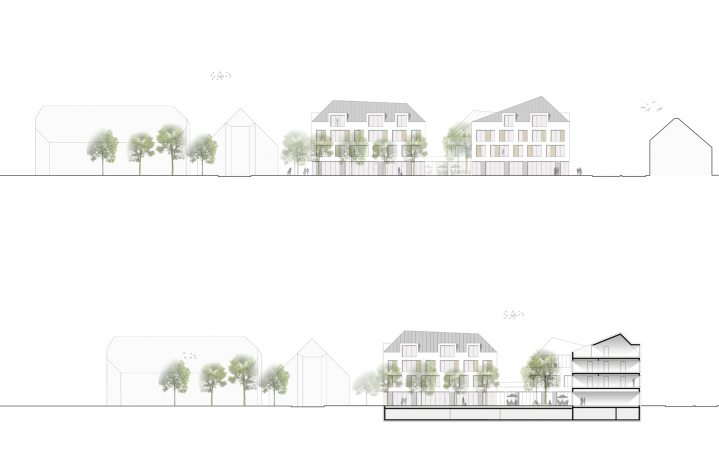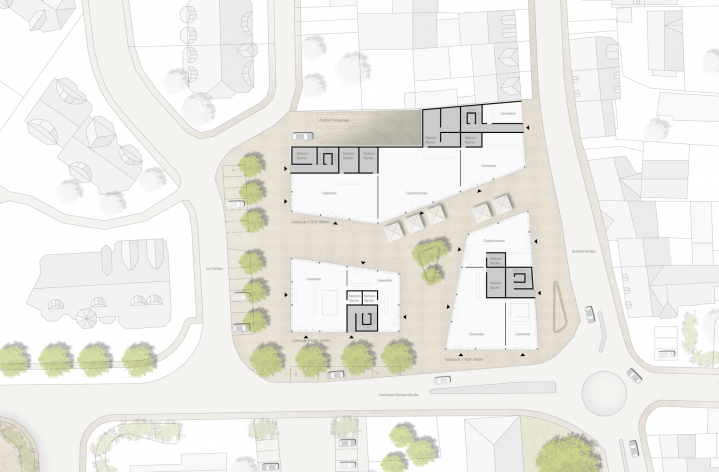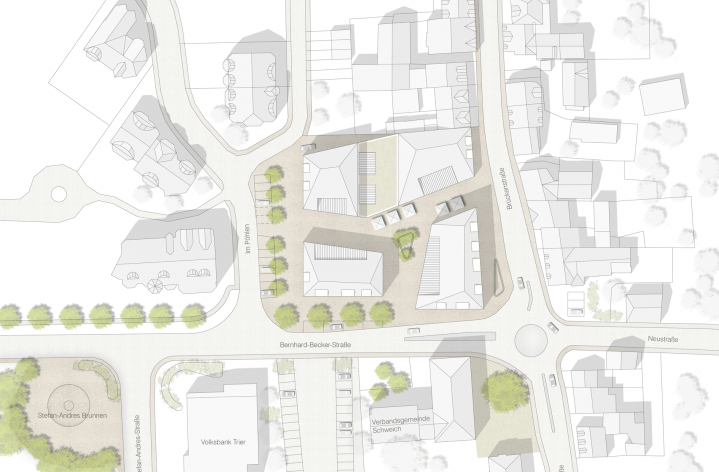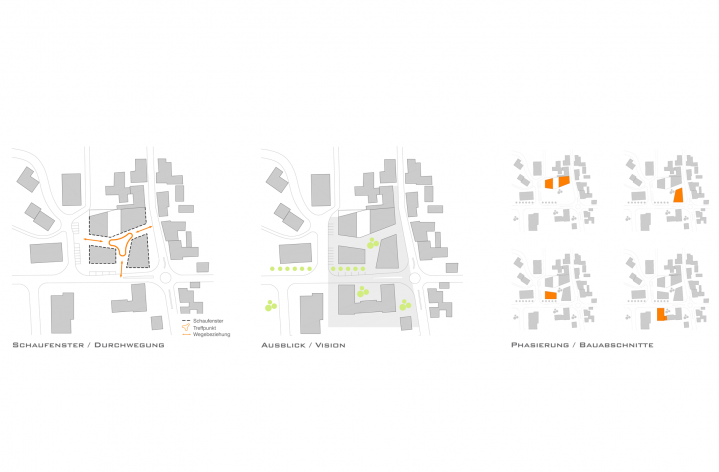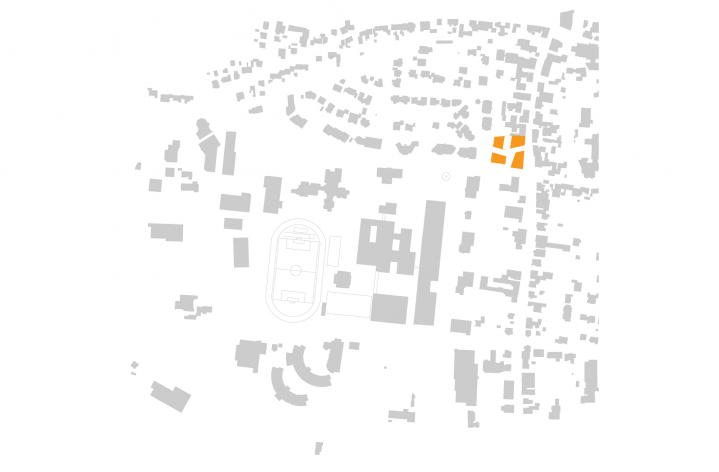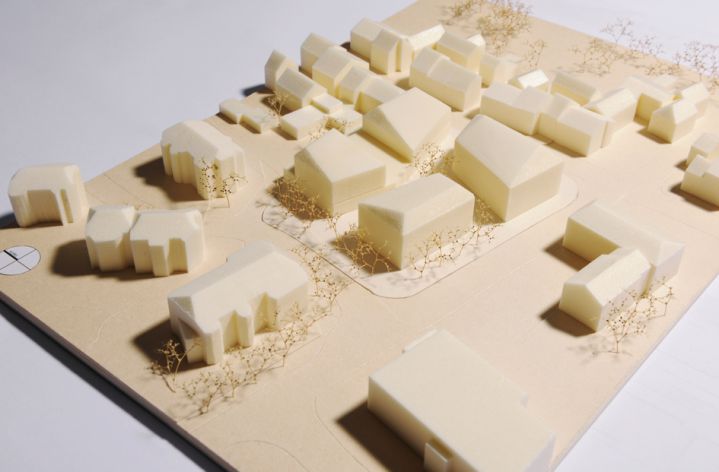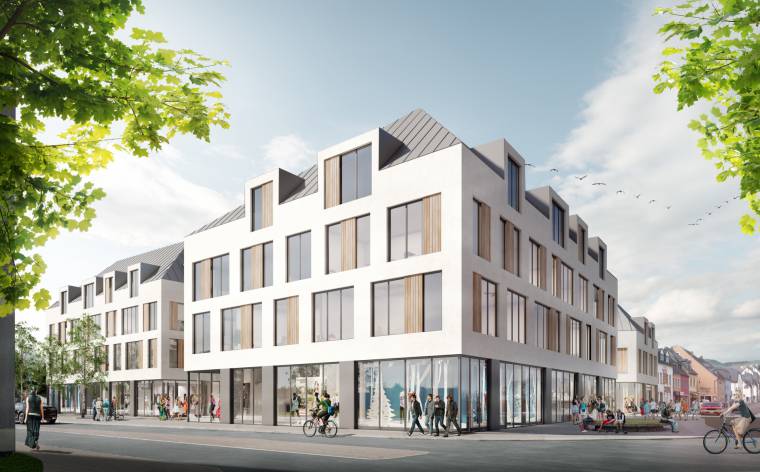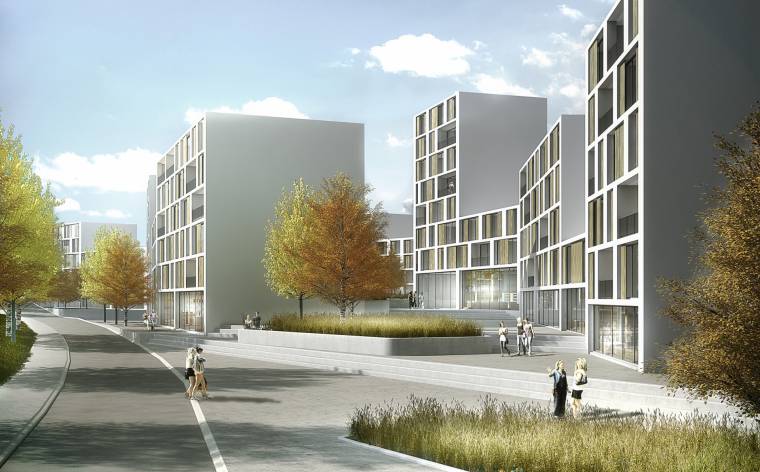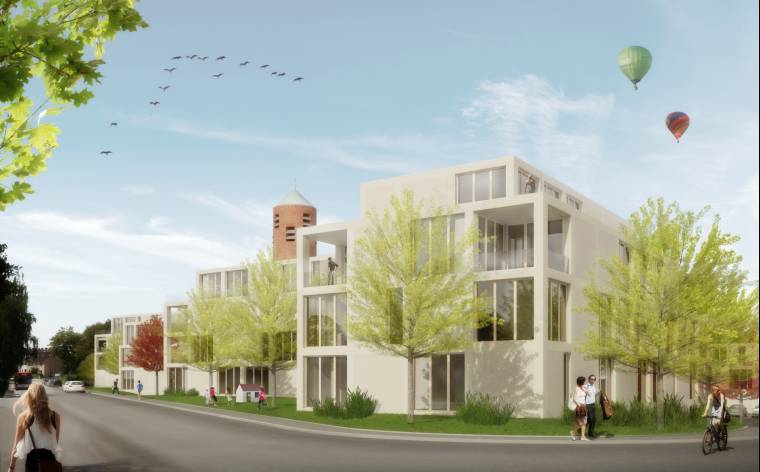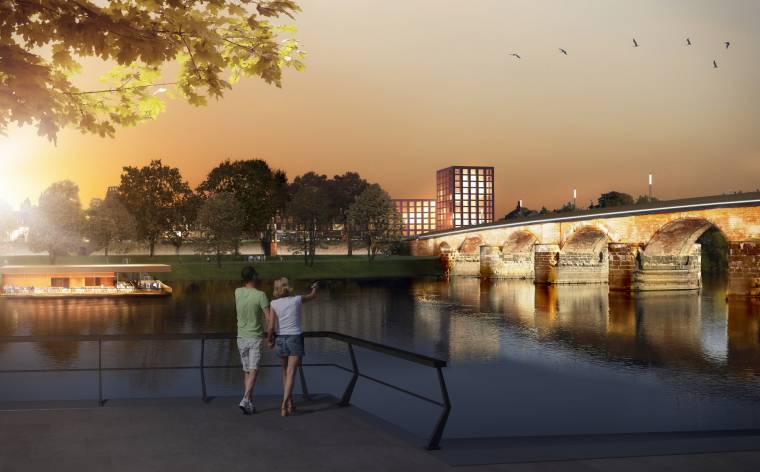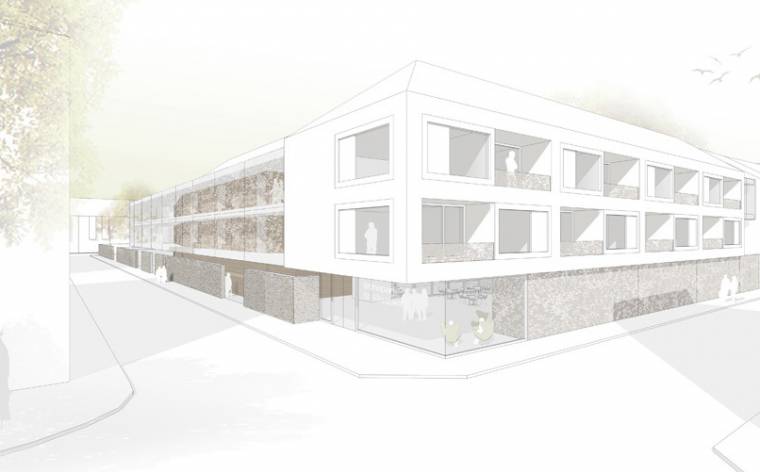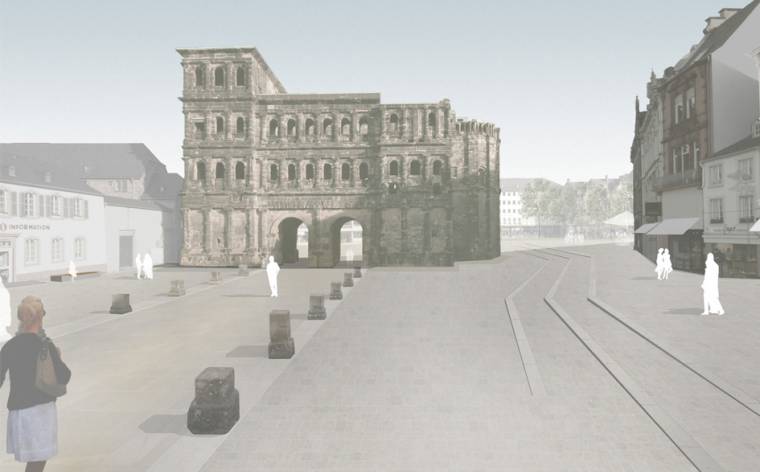Category :
Urbanism competition
Project :
Development of a urban development concept for an inner-city residential and business quarter
Client :
Projekt 1 GdbR, Longuich
Country :
Germany
Area :
gfa 6.237 m²
Planning period :
06/2014 - 08/2014
Award :
1st prize
Share on
project Project 1 - Reorganization "Brückenstrasse" awarding authority Project 1 GdbR, Longuich (GER) team WW+, Esch-sur-Alzette/Trier (LUX/GER) , schuh + weyer architekten (GER) rendering Stube 13, Zürich (CH) gfa 6.237 m² nfa 5.500 m² gv 31.675 m³ total area 0.4 ha net construction costs (incl. KG 500) 8.410.000 € competition phase 06/2014 - 08/2014 multiple commission 1st prize
Guideline
The underlying idea of the design is to further enhance the geographical centre of the locality together with its surrounding existing buildings as the heart of the small town of Schweich and to resolutely counter the fragmentation of Schweich’s commercial zones. The new development is to act as a link between the historically evolved commercial streets, which pervade the locality in a north-south direction, and the precincts that have grown in the last 20 years, namely Brunnenzentrum, Schlimmfuhren and Ermesgraben.
Urban planning concept
The first objective is the creation of a square that brings together all facets of urban life. In addition to the traffic-free pedestrian zones surrounding businesses, cafés and shops, outdoor eateries as well as rest and recreational areas are to provide a high-quality environment, previously unknown in Schweich. With the exception of the northern structure, which separates the square from the undefined rearward development of Brückenstraße, the building structures are freely positioned on the square. On the one hand, they thus absorb the scale of the surrounding buildings, while on the other hand maximum window space is guaranteed on the ground floors as well as optimal light for the upper floors. The square’s surface is designed to feature one material up to the road surface boundaries. The visual distinction between public footpath and private property disappears. The completely vehicle-free square provides equal public and private access. Positive features from the surroundings, such as the tree rows lining Bernhard-Becker-Straße, are continued on the square.
Traffic, path and parking concept
Entry to and exit from the underground parking is achieved from the northwest side of “Steinerbaum” street. On the one hand, minimum interference from public traffic can be expected and on the other hand the underground parking can be made optimal use of. The entire east side of “Steinerbaum” is reserved for stationary traffic, making the location of the underground parking access logical. Along “Im Pöhlen“, parking spaces are arranged vertically, while along “Bernhard-Becker-Straße“ parking spaces are arranged in a longitudinal direction. These above-ground parking spaces are primarily considered short-term parking spots for customers using the loading zone. The underground parking houses all the required parking spaces for the residences, accommodation services as well as offices and professional practices. Each residential parking space comes with a storage space, which provides room for bicycles or bulky items. Since vehicle traffic barely affects the precinct and does not cross it at any stage, the square can be crossed or passed without danger. Any necessary delivery traffic is relegated to the square’s boundaries. The release of approximately 45m2 of land to the public traffic area has enabled the square to conveniently connect – in the region of the roundabout both immediately succeeding Brückenstraße and opposite the secondary access of the VG administration via a crossing help – to the lower part of Brückenstraße. A connection with Bernhard-Becker-Straße is achieved in the axis of the existing Baumallee. The rest of the so-called Brunnenzentrum will be connected to the square via a footpath at a point that is non-critical from a traffic point of view. On the square itself, the public spaces are designed in such a way that alongside the usual daily traffic there is sufficient room to establish permanent outside eatery facilities and neutral recreational areas within a high-quality environment.
Architectural concept
The ensemble is divided into four distinctive building structures. Accordingly, the development in its scale reflects the mixed-use structures of the neighbourhood. The highly transparent ground floors are superimposed by two storeys rendered in plaster with a punctuated façade. The roof is designed as a pitched roof with metal sheeting and uniform eaves but varying roof pitches and ridge heights. While responding to the surrounding buildings, a roof form is nevertheless created that allows for an upscale expansion of the roof space. The façades are shaped in accordance with the rhythm of the openings, which despite varying sizes are clearly defined through the choice of recurrent design elements.
Future concept
In the context of the future modification or expansion of the Schweich municipality administration, the square concept could be shifted to the opposite side. By including some of the current public parking spaces, the square’s “green pendant” could encircle the municipal building. Subject to gaining the Sparkasse for a coordinated appearance, the design of the open spaces could leave an individual imprint right up to the commercial premises of the bank branch and thus embody a distinctive and vibrant centre
Contact us !
